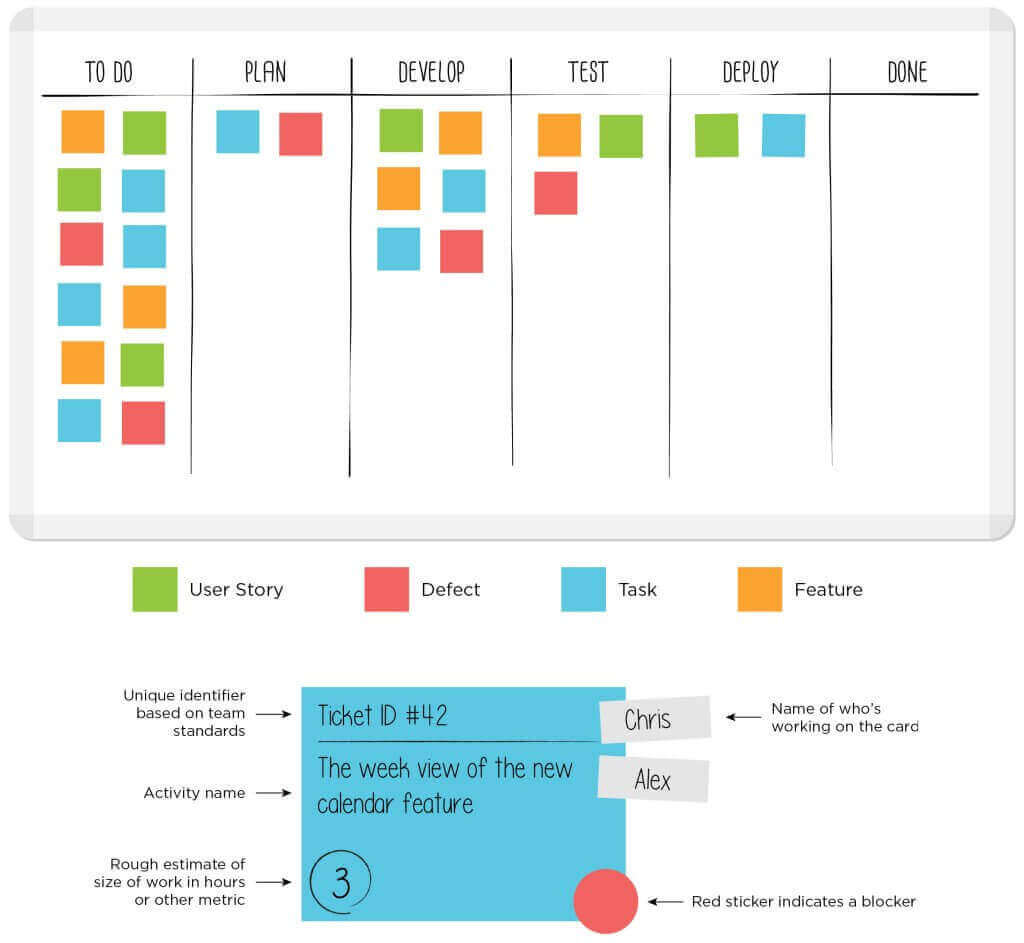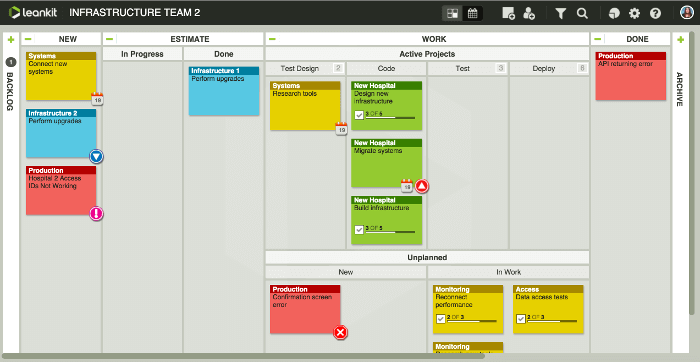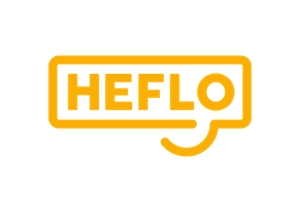Lean, Kanban and other agile methodologies are concepts that, for many, are still confused. And this is natural, because these approaches complement and interconnect, one as a tool and the other as methodologies.
They evolved over time and changed.
So before we show you an example of a lean kanban board, let’s get a better understanding of all of these concepts.
The Lean Kanban Board and its relationship with Agile Methodology
Agile Methodology
The Agile Manifesto was created around 2001 with the purpose of assisting in the development of software but eventually spread to several other areas, mainly product development and even marketing and communication plans.
In short, we can say that any team that bases its actions on the 12 agile principles follows this methodology.
Agile methodologies ultimately aim for the collaborative development of a final step-by-step delivery through small individual deliverables, allowing you to change these small deliverables at any time (due to changes in scope or customer feedback) without affecting the whole thing, allowing only relevant products to be brought into the market.
Progress is incremental, which enables quick and agile management to adapt to changing scenarios without major setbacks.
Lean
It was in the 1950s that the Lean movement emerged in Japan, also called lean manufacturing, because it was widely employed in the automotive industry.
At the turn of the millennium, it began to be used for the development of software, and in 2008, it evolved into the famous 5 Lean principles (initially there were 7), created by Eric Reis, with the primary objective of helping startups to:
“Develop products and services in an environment of extreme uncertainty”.
The 5 lean principles are as follows:
- Entrepreneurs are everywhere
- Entrepreneurship is administration
- Validated learning
- Accounting for innovation
- Build – Measure – Learn
The goal of all of this is to follow a cycle in which many tests are done, preferably linked to the opinion of consumers and users, with the goal of reducing the risks of developing a product that is not of interest to the market.
Kanban
Kanban is a scheduling system, originally developed for inventory control (in Japan, once again …), but has been adapted to prevent any wasted or delayed productive effort from a team being supplied excesses or failures.
Currently, 4 principles are used when using a kanban board:
- Visual jobs to increase communication and collaboration
- Limitation of work in progress to avoid a sequence of endless non-prioritized tasks
- Measure and optimize workflows, collect metrics and predict future problems
- Aim for continuous improvement as the result of these analyses
Thus, we can conclude that:
Lean and Agile are methodologies, real management philosophies, while Kanban is a tool that can be used by these first two concepts.
In fact, Lean encompasses Agile methodologies, and both can assist Kanban as well
Lean Kanban
Some theorists even consider this as another specific methodology, which they call the Lean Kanban Board and it can be defined as:
A methodology that aims to avoid both production shortage and overproduction, to highlight problems and define what should be done, without the need for superior guidance or production control planning.
Lean Kanban Board Examples
A Kanban Board features 6 columns:
- To Do
- Plan
- Develop
- Test
- Deploy
- Done

Source: https://leankit.com/
Some Kanban Boards are leaner, like this:

Others are much more complex and even include BPMN modeling notations.

Already, Lean Kanban Board’s are more generic and, at the same time, detailed, here’s a typical example:
 Source:
Source:
Regardless of how you use your Lean Kanban Board, the truth is that an agile, intuitive, cloud-based and remote-access BPMN tool can significantly assist in the design of your processes.
Experience HEFLO, the intuitive BPMN tool that makes the job of process modeling much more productive and collaborative.

